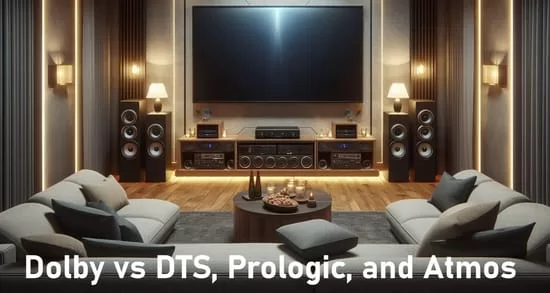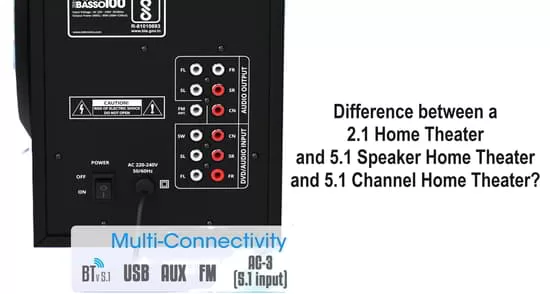AC3, Dolby Digital, Dolby Atmos, Dolby Pro Logic, Dolby Pro Logic II, DTS, and DTS:X are all digital audio technologies used in the entertainment industry. Here we are giving you very short details about these premium audio features. So that you can buy devices according to your needs.Here are some key differences between these technologies:
Table of Contents
AC3 and Dolby Digital –
AC3 (Audio Codec 3) and Dolby Digital are both audio compression technologies developed by Dolby Laboratories. They are both channel-based audio formats that support up to 5.1 channels of audio (left, center, right, surround left, surround right, and subwoofer). Dolby Digital is a higher-quality version of AC3, with a higher bit rate and better compression.Dolby Atmos –
Dolby Atmos is an object-based audio technology developed by Dolby Laboratories. Unlike traditional channel-based audio formats, which map sounds to specific speakers, Dolby Atmos allows sound designers to place sounds in a three-dimensional space, providing a more immersive and realistic audio experience. Dolby Atmos can support up to 128 simultaneous objects and is used in cinemas, home theaters, and other entertainment venues.Dolby Pro Logic and Dolby Pro Logic II –
Dolby Pro Logic and Dolby Pro Logic II are both audio decoding technologies developed by Dolby Laboratories. They are designed to decode stereo audio into 5.1 or 7.1 surround sound. Dolby Pro Logic is an older technology that uses matrix decoding to extract surround sound from a stereo source, while Dolby Pro Logic II is a newer technology that uses more advanced algorithms to create a more immersive surround sound experience.You can find Prologic- 1 and Pro Logic 2 Board with the remote kit and do not forget to compare Dolby vs DTS.DTS and DTS:X:
DTS (Digital Theater Systems) and DTS:X are both audio compression and decoding technologies developed by DTS, Inc. DTS is a channel-based audio format that supports up to 7.1 channels of audio, while DTS:X is an object-based audio format that supports up to 32 channels of audio. DTS:X is designed to provide a more immersive and flexible audio experience than DTS, particularly in home theater systems.Dolby Atmos, Dolby Pro Logic II, and DTS:X are all designed to provide a more immersive and realistic audio experience, while AC3, Dolby Digital, Dolby Pro Logic, and DTS are more traditional channel-based audio formats.Understand Surround Sound Formats Comparison –Here is a comparison of some popular surround sound formats:2.0 Stereo –
This format is the most basic and only provides two audio channels – left and right. It’s used in most basic audio systems and is ideal for listening to music.2.1 Stereo –
This format is similar to 2.0 Stereo but includes an additional subwoofer channel for low-frequency sounds. It provides a fuller audio experience for music and movies.5.1 Surround Sound –
This format provides six audio channels – front left, front right, center, surround left, surround right, and a subwoofer channel. It’s the most common format used for movies, TV shows, and video games, providing a more immersive audio experience.7.1 Surround Sound –
This format adds two additional surround channels to the 5.1 formats, providing even more spatial detail and depth. It’s commonly used in larger home theater systems and commercial theaters.Do not forget to follow us if you love to install TV channels and Audio Systems.Discover more from TrackDish - TV Installation Guide
Subscribe to get the latest posts sent to your email.
Show Comments




